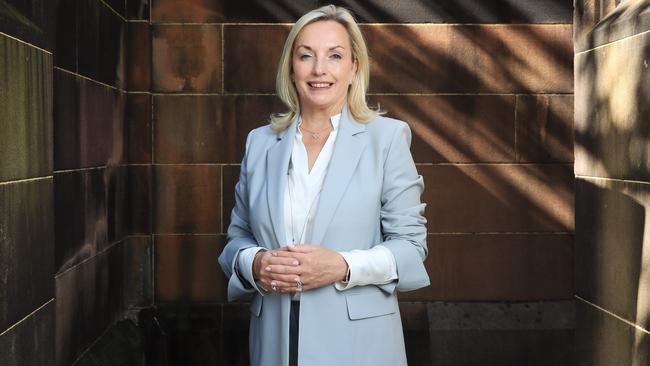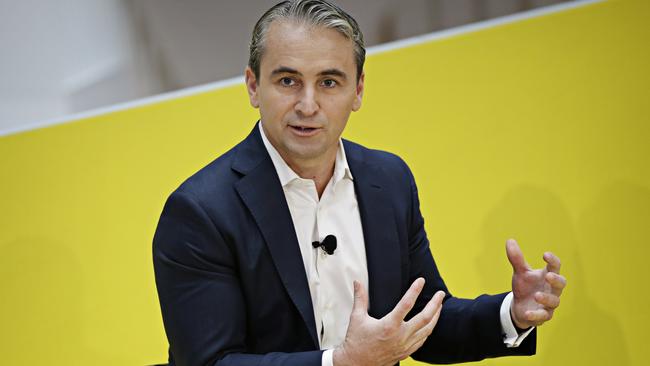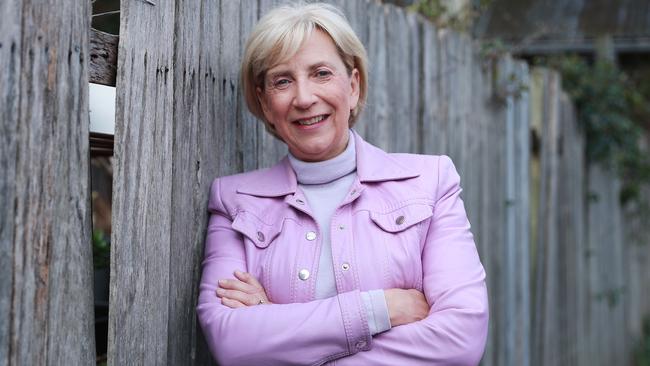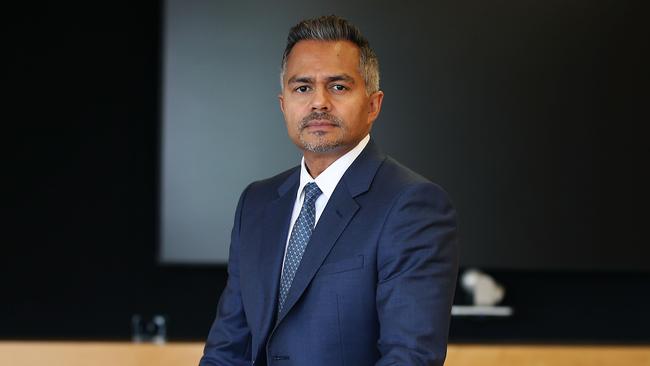Biggest risks to business: The Australian’s 2021 CEO Survey
Toll Global Express boss Christine Holgate told the The Australian’s 2021 CEO Survey the firm could employ 1000 people on the spot if only it had access to the labour.

The standout risk to the recovery that most troubles business leaders in Australia is the skills shortage.
The Australian’s CEO Survey with a record 85 responses from the top floor paints a vivid picture of 2021 as truly a year for recovery, but where a pervasive threat of talent shortages will blunt the nation’s growth.
Business stepped up through the crisis and there is a comprehensive call from leaders for open borders that stay open, skilled migration to allow them to source the best talent and for domestic upskilling.
CEO Survey: Top 10 companies reveal their biggest issues
At Toll Global Express, Christine Holgate says she could employ an additional 1000 people today, if only she had access to the labour.
“There is a real, immediate demand for workers and with no migrants entering Australia, no working holiday visas, coupled with fewer international students, this problem is likely to get worse.
“As it stands today, Toll Global Express could employ an additional 1000 people, if only we had access to the labour.”

The government promises one million more jobs over the next four years but delivering those jobs, and skilled ones will depend critically on borders staying open. There are implications for inflation, for wages growth and productivity growth.
“The contribution of business has taken centre stage this year,” says BHP’s Mike Henry. “Many companies have gone above and beyond during Covid-19 to keep people in jobs and to support their suppliers, including small businesses.”
Australian banks deferred more than one million loans for customers throughout the pandemic. “Covid has reminded the entire financial services sector of its purpose – which is to support the country and its customers in times of need,” says CBA’s Matt Comyn.”

The country’s chief executives were asked for their top three risks to recovery. While some listed a new pandemic wave, more looked through to other recovery risks.
Concerns over skilled labour was by far the most listed: not just in pockets like construction or tech, but across companies like BHP, BOQ, Crown Entertainment, Cochlear, Endeavour Drinks, GrainCorp and insurer IAG.
Stockland’s Tarun Gupta highlights small businesses where skills shortages and cost increases are becoming a significant barrier to growth.
CEO Survey: Companies from A to B respond
Ross McEwan at NAB expects unemployment to fall to 3.8 per cent by the end of 2022, below the government’s figures of 4.5 per cent by June 2022 and 4.25 per cent by June 2023. He says access to workers is a challenge for every business owner or manager he speaks to. “The current labour shortage, both skilled and unskilled, is holding businesses back, particularly hospitality, tourism, agriculture, and manufacturing.”
AustralianSuper’s Paul Schroder says the great unknown is the extent of the mismatch between the jobs on offer and the jobs that people are seeking.
Demand for e-commerce and last mile logistics has mopped up skilled workers in tech, customer experience and data says Officework’s Sarah Hunter.
“This is an emerging issue not just in retail but in all almost all sectors grappling with digital business transformation.”
Nowhere is this felt more acutely than in consultancy where human capital is the prime asset.
“The top three risks to growth are skills shortage, skills shortage and skills shortage,” says EY’s David Larocca.
Both he and PWC’s Tom Seymour believes Australia will be a net exporter of talent in the short term. Deloitte’s Adam Powick notes some relief as borders open, but he sees conditions firmly embedded for several years before the professional talent market normalises.
“Business has played a major part in keeping the economy moving, notwithstanding the Victorian and NSW shutdowns” observes Rob Adams at Perpetual.
“It is now vitally important that business and government work collaboratively to address shortages of skilled and unskilled labour.”
CEO Survey: Companies from C to I respond
Among many offering solutions to the skills shortage, leaders at CBA, Bunnings and Newcrest urge governments to deliver more skills training and keep domestic and international borders open with confidence to attract highly skilled migrants back to Australia.
The Mid-Year Economic and Fiscal Outlook is unlikely to allay concerns around upskilling. On Thursday – beyond dismissing Labour’s calls for free TAFE – the Coalition had little to say.
It is unclear where the $16bn in the budget for decisions taken but not yet announced will land.
However, ahead of the election the odds are shortening for spending to focus on an extension of the ‘temporary’ low and middle income tax offsets.
Inflation is top of mind for CEOs as a perfect storm of stimulus, cashed up households, supply chain failures and high global energy prices play through the economy. But Australia is different to the US where fears of rising inflation, a rebirth of unions within the tech sector and the great resignation are worrying business leaders stateside.
Inflation is like rain says ANZ’s Shayne Elliott.

“We all appreciate a little to keep the garden growing, but not too much. We end up with a flood.”
Chief executives at Lend Lease, Judo Bank and Ampol all list the three risks to recovery as borders, access to labour and skills, and inflation.
“Each of these risks are linked closely together and will need to be managed well as we head into 2022,” says Ampol’s Matt Halliday.
Graham Chipchase – at pallet maker Brambles – points to significant lumber, labour and transport inflation, and a shortage of pallets in markets. Customers are holding more inventory to mitigate supply chain uncertainty and unpredictable consumer demand patterns.
Most business leaders seem comfortable with Australia’s macro policy settings and are on a ‘watch and act’ on inflation.
In fact the RBA would like wages growth and inflation to pick up further in the coming year, says Macquarie’s Shemara Wikramanayake. And IFM’s David Neal welcomes a cautious approach by central banks to inflationary pressures which shows a commitment to supporting recovery.
As BOQ’s George Frazis points out, the key is what happens to wages. Over the four years to 2024-25, MYEFO forecasts wages to grow by 11.25 per cent, ahead of inflation at 10.25 per cent.
To date wages growth has been slow.

Ashurst chief executive Paul Jenkins says his sector, professional services was the only one of 18 industry sectors with annual wages growth above inflation of 3 per cent for the year to September.
AMP’s Alexis George agrees, observing wages growth does not appear to be broad based and that whether it can be sustained is unclear.
In any case, argues Andrew Harding at Aurizon, the risk of a break out in inflation is necessary.
“The nation’s macro-policy settings heavily favour continuing to support a recovery from the pandemic above the fear of inflation.”
CEO Survey: Companies from J to Q respond
The corporate appetite for government to begin budget repair is also measured. This is despite MYEFO forecasting a cumulative deficit over four years to 2024-45 to be $342.4bn.
“Budget repair will be needed eventually but moving too quickly would risk the recovery” says NAB’s Ross McEwan.
For Frank Calabria at Origin, the challenge is finding the right balance between responsible monetary policy and the impacts it may have on the economy, given high government and household debt.
Most chief executives are also subdued over any urgent need for economic reform with only a few calling for reform not to slip off the agenda. Partly this reflects other priorities emerging from the pandemic, partly some apathy ahead of the election and a lack of progress on energy and tax.

What is remarkable in The Australian’s 2021 CEO Survey is how unified business leaders are in their concerns over skills shortages.
Other factors like energy transition risk, geopolitical risk with China, the housing market and cyber risk were raised just a handful of times in responses to our question of the top three risks to recovery.
There is certainly praise for the government’s role in vaccinating Australians.
“Business and government working together. This has made everything else possible,” says Latitude Financial’s Ahmed Fahour.
CEO Survey: Companies from R to Z respond
Yet there is also angst over a future knee jerk response on borders, well captured by Alan Joyce at Qantas.
“The greatest challenge to recovery is the patchwork approach to reopening we are seeing with each state and territory putting their own twist on travel requirements.”
As confidence grows that we can all live with the virus, he hopes things with normalise, especially the requirement for PCR testing at every turn.
APA’s Rob Wheals believes it is critical the Australia sticks to the plan to reopen safely without political scoring among the states.
Frustration among CEOs at politicisation of the pandemic and lack of policy consistency is widespread.
“When the only tool you have is a hammer everything looks like a nail. My fears are for mental health, particularly the increase in anxiety levels among our young people,” laments Lynas Rare Earth chief Amanda Lacaze.
“It appears that helicopter parenting has now extended to helicopter governing with the consequence that individuals are less able to assess and manage risk.”
The biggest risk for Australia says Andy Penn at Telstra is that we don’t see this moment for what it is – a once in a century opportunity to reset and build back stronger in a way that is more sustainable and equitable than before.






To join the conversation, please log in. Don't have an account? Register
Join the conversation, you are commenting as Logout